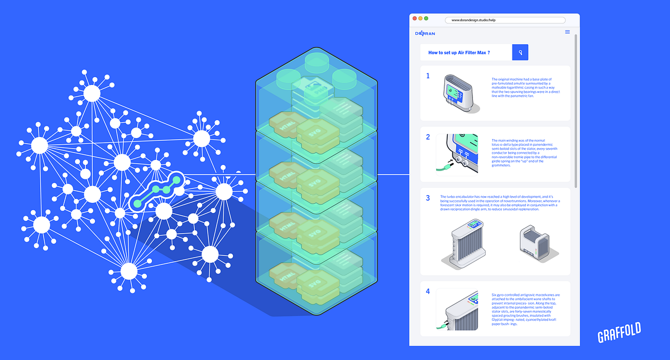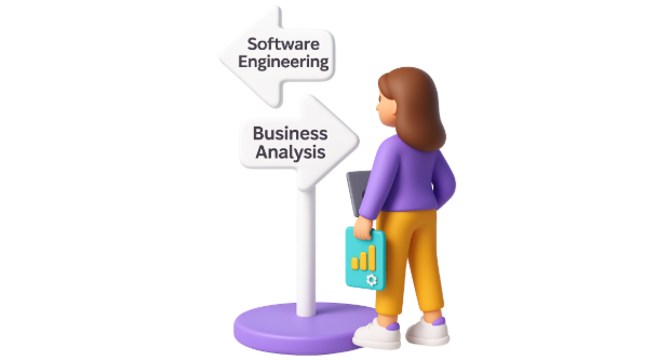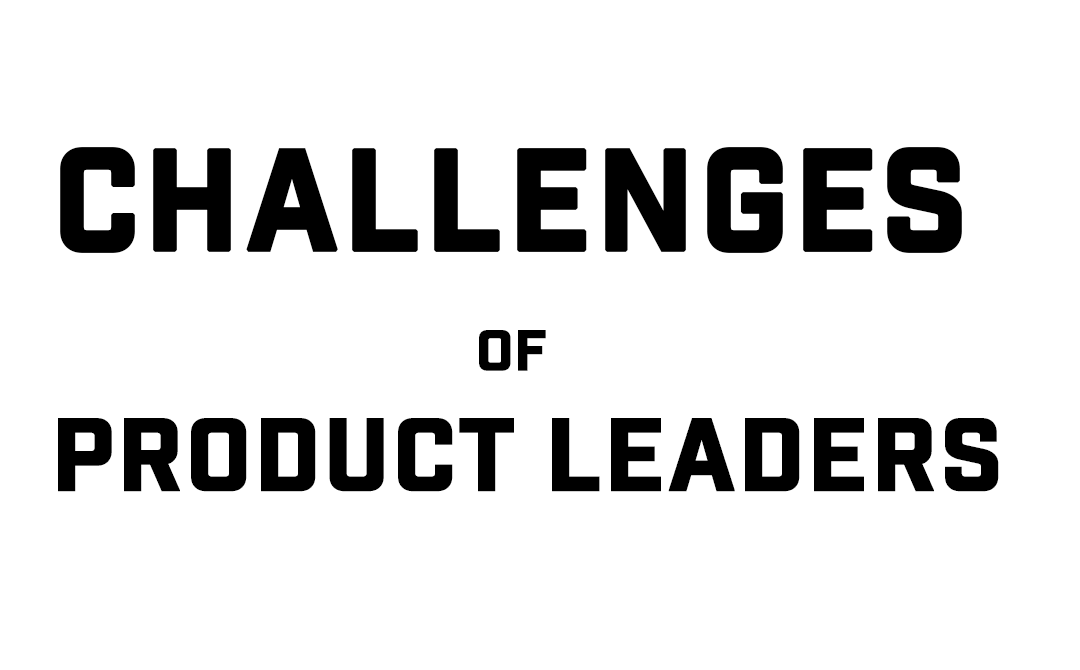Product Management News
Medium
311

Image Credit: Medium
Designing UI That Makes Space for Magic
- AI tools sometimes provide polished but false answers known as hallucinations, eroding trust in the system.
- The issue lies not just in data or architecture but in the user experience design.
- Generative AI systems generate smooth responses that seem reliable due to coherence but do not always produce truth.
Read Full Article
18 Likes
Medium
399

Image Credit: Medium
A New Map for Product Docs
- The transition from printed format user guides to GPS-style step-by-step instructions is just beginning.
- There's a major opportunity to apply AI tools to the long-neglected problem of product documentation.
- Users want clear, step-by-step instructions tailored to their specific task, similar to GPS navigation.
- Existing product manuals often lack connection to an underlying map, resulting in AI-generated content not being based on actual data.
- A proposal for a dynamic system involving computer vision, LLMs, CCMS, and a knowledge graph is made to improve product documentation.
- Product manuals stored as static PDFs need to be transformed into structured, searchable content for better user experience.
- The development of a knowledge graph is suggested to organize product data and enable on-demand, tailored instructions.
- The knowledge graph acts as a map, allowing tools like RAG and pathfinding algorithms to generate step-by-step instructions for any valid route.
- The system aims at replacing static manuals with a dynamic, living system aligned with how users search, learn, and solve problems.
- Adoption of AI tools like ChatGPT highlights the readiness of users to seek instructions from AI, emphasizing the need for accurate, high-quality data.
Read Full Article
24 Likes
Medium
171

Image Credit: Medium
To the Product Manager Who Feels Alone
- The author, a first-time book creator, reflects on the loneliness and challenges faced in pursuing their dream.
- Drawing a parallel to the life of a Product Manager, the author discusses how feelings of isolation can arise in decision-making and leadership roles.
- The pressure to excel without strong support systems can lead to doubts and self-sabotage.
- Emphasizing the importance of practical application over excessive learning, the author urges steady growth through experience.
- Encouraging filtering out negativity, the author shares personal experiences, like attending an Art Battle, to find inspiration and relief.
- Attending creative events and engaging with supportive communities can alleviate feelings of isolation and offer fresh perspectives.
- The narrative underscores the message that individuals in challenging roles, like Product Managers, are not alone in their struggles.
- The author shares personal strategies for coping with overwhelm and seeking inspiration, highlighting the value of diverse experiences.
- The importance of self-care, seeking diverse sources of inspiration, and finding supportive communities are key themes in the article.
- The story concludes with a reassuring message that individuals facing challenging roles should remember they are not alone in navigating difficulties.
- The author signs off with a positive note, indicating a sense of connection and support for individuals in similar situations.
Read Full Article
10 Likes
Medium
88

Image Credit: Medium
Product Notes by Sai — From Code to Clarity: Why I Outgrew My Developer Mindset
- The author, Sai, expresses a sense of fulfillment in solving coding challenges late at night.
- However, Sai starts feeling constrained by this developer mindset, desiring a broader understanding beyond just coding.
- Sai pursued degrees in computer science to delve into how systems are built and to create solutions from scratch.
- Upon entering the workforce as a software engineer, Sai found a disconnect between technical tasks and broader product understanding.
- Sai started questioning the significance and context of tasks, realizing the importance of understanding the 'why' behind them.
- This led Sai to shift focus towards business analysis to better align work with fundamental business goals and user needs.
- Although transitioning roles was daunting, Sai found the pull towards understanding users and shaping solutions more compelling.
- Sai is now aiming to transition to product management, embracing discomfort as a pathway to growth.
- The journey highlighted by Sai emphasizes that personal growth often stems from asking insightful questions rather than just technical skills.
- The author encourages others in similar transitions to share their stories and join in the journey of growth.
Read Full Article
4 Likes
Discover more
- Programming News
- Software News
- Web Design
- Devops News
- Open Source News
- Databases
- Cloud News
- Operating Systems News
- Agile Methodology News
- Computer Engineering
- Startup News
- Cryptocurrency News
- Technology News
- Blockchain News
- Data Science News
- AR News
- Apple News
- Cyber Security News
- Leadership News
- Gaming News
- Automobiles News
Medium
118

Leading with Heart: Why Emotional Intelligence is the Key to Project Management Success
- Emotional intelligence plays a crucial role in project management success, encompassing self-awareness, empathy, social skills, motivation, and self-regulation.
- Project managers with high emotional intelligence can gauge team morale, handle stress effectively, and build trust with stakeholders.
- Emotionally intelligent managers approach conflicts with mediation and understanding rather than impulsiveness, leading to enhanced collaboration and relationships.
- They excel in active listening and communication, crucial for effective stakeholder management, by understanding non-verbal cues and adapting communication styles for different audiences.
- This results in clearer expectations, reduced misunderstandings, and a more united team.
- In a dynamic landscape with constant change and diverse teams, emotional intelligence bridges the gap between processes and people, promoting a culture of respect, inclusion, and resilience.
- EI is essential for project success as it empowers individuals to deliver confidently and compassionately, complementing the guidance offered by project management tools.
Read Full Article
7 Likes
Medium
338

Image Credit: Medium
The Sandwich That Killed a Feature — and Sparked an 80% Engagement Boost
- The article discusses the launch of a new livestreaming platform aimed at helping musicians monetize digital concerts during the pandemic.
- After the MVP launch, the team paused to gather feedback before further feature development.
- Inspired by the NBA Bubble fan setup, an executive suggested a feature that required significant development time.
- Despite initial reluctance, an experiment with real fans showed the feature was ineffective and was promptly ended.
- Realizing the importance of meaningful engagement, the team developed 'The Artist View' dashboard for real-time fan interaction.
- With 'The Artist View,' fan interaction increased from 25% to 80%, leading to longer and more engaging performances.
- The shift towards a feedback loop between artists and fans resulted in lasting engagement and improved user experience.
Read Full Article
20 Likes
Hackernoon
193

Image Credit: Hackernoon
Know Your Product: A Practical Guide to Functional Decomposition
- Product management involves understanding the product, its features, limitations, and evolution over time.
- New product creation involves starting with essential features, validating hypotheses, and adapting to market needs.
- Managing a mature product involves dealing with a large number of features, bugs, and technical debt.
- Systematic product decomposition helps prioritize features based on their impact on product value and cost.
- Collecting input data from sources like user documentation, product specifications, user stories, and product bugs is essential for product decomposition.
- Building a manageable dashboard based on feature registry helps identify core product functionality and additional domains.
- The process of functional decomposition assists in understanding the cost of each feature, its value, and potential improvements.
- Data-based management can enhance product quality and market positioning by making informed decisions.
- Understanding the details of the product is crucial to avoid management mistakes and improve overall product performance.
Read Full Article
11 Likes
Medium
311
Image Credit: Medium
Why Most Product Launches Fail: The Missing Bridge Between Features & Personal Stakes
- The article discusses the common reasons for product launch failures in B2B marketing.
- It highlights the importance of understanding the personal stakes behind user decisions for successful adoption.
- The author shares a case study of launching an AI-powered accounting solution during lockdown in France.
- The focus was shifted from product features to addressing personal struggles and fears of the target users.
- The Bridge Builder Framework is introduced as a systematic way to identify personal stakes driving behavior change.
- The importance of addressing underlying personal stakes rather than just solving the business problem is emphasized.
- Creating smart constraints to drive action and commitments to ensure meaningful adoption is recommended.
- A case study of AMI Compta illustrates the effectiveness of setting high standards for adoption rather than offering free trials.
- The article suggests that people adopt new behaviors, not just products, and behavior change occurs when personal stakes are understood.
- The article concludes by emphasizing the importance of creating a bridge between user reality and business ambition for successful product launches.
- The author advises focusing on how the product improves the user's daily life rather than just the features.
Read Full Article
18 Likes
Medium
48

As continuation of my last article — I want to provide more dive deep into PRDs.
- The creation of a Product Requirements Document (PRD) should involve collaboration and diverse expertise, not just the product manager.
- A well-structured PRD should provide clarity and focus, typically including sections like high-level context, success criteria, product functionalities, user interactions, limitations, success tracking, technical details, development roadmap, and an appendix for clarity.
- Best practices recommend that an effective PRD should adhere to standards like the IEEE Recommended Practice for Software Requirements Specifications.
- Artificial intelligence tools can assist product managers by providing insights and support in the PRD creation process, but human collaboration and validation remain crucial.
- Common traps to avoid in PRD creation include overlooking essential details or becoming too rigid in the process.
- A well-crafted PRD is vital for alignment, clarity, and focus in product development, serving as a strategic tool and foundation for successful products.
Read Full Article
2 Likes
Medium
320
Image Credit: Medium
The Ultimate Guide to Jobs To Be Done (JTBD) | Insights from Bob Moesta, Co-Creator of the…
- The Jobs To Be Done (JTBD) concept focuses on understanding what 'job' customers are hiring a product to do, rather than solely focusing on features or competition.
- By reframing competition through the lens of JTBD, businesses can uncover essential customer needs and perspectives.
- Identifying struggling moments where customers face unmet needs can lead to innovative solutions that address deep-seated emotional or contextual issues.
- Effective innovation comes from recognizing unresolved struggles and aligning competing forces to drive change.
- JTBD emphasizes the importance of stories over opinions in user research, helping companies gain actionable insights.
- Customer interviews play a crucial role in JTBD, offering valuable insights when conducted thoughtfully.
- Digging beyond surface-level explanations in customer interviews can reveal the true motivations behind purchasing decisions.
- While JTBD is a powerful tool for understanding customer needs and motivations, it may be less effective for audiences with limited agency.
- JTBD encourages businesses to see themselves through the eyes of their customers, understanding their goals, emotions, and struggles.
- Reorienting around JTBD can help startups better address customer needs and make informed decisions to improve product performance and innovation.
Read Full Article
19 Likes
Medium
235

Image Credit: Medium
New Age, New Challenges: Product Leadership in the 21st Century
- Competencies required for Product Managers are evolving rapidly to keep pace with shifting customer behavior analytics and transforming product platforms.
- Product complexity, such as integrating CRM systems with multiple social media platforms, leads to higher interdependencies among features, causing delays in product development.
- Customer behavior and product design have become less predictable due to the speed of delivery and customer expectations driven by cloud platforms and GenAI product development.
- Customers now expect a wide array of features bundled into single products like super apps, leading to long roadmaps and challenges for Product Managers to focus their efforts effectively.
- Despite challenges, innovation in modern product development continues to thrive with impactful products solving real-world problems and reshaping user expectations.
Read Full Article
14 Likes
Medium
7.5k
Image Credit: Medium
My experience with Glance AI
- Glance AI has launched an AI-powered 'try on' application for apparel, allowing users to view themselves in different clothing items.
- Users provide physical details and style preferences, and the app generates AI images based on these inputs.
- The app collaborates with e-commerce platforms to drive traffic and sales through personalized recommendations.
- Users can explore similar products to those in the AI-generated images and proceed to make purchases on the respective e-commerce platforms.
- While Glance AI charges fees for directing traffic, users can opt out of their data being sold.
- There are some usability challenges, such as redirection to seller portals and image quality concerns, but improvements are expected over time.
- Other competitors like Google have also introduced similar 'try on' features in the market.
- Glance AI aims to stay ahead by continually enhancing its features and maintaining a high user rating and industry recognition.
- The future success of Glance AI will depend on its ability to innovate and retain user engagement amidst growing competition in the sector.
- With AI-driven try-on features becoming popular in e-commerce, the app's sustainability and evolution will be key factors to monitor.
- The app has received positive feedback for its AI technology and user experience, positioning it as a leading player in the market.
Read Full Article
2 Likes
Medium
276

Image Credit: Medium
Product management — retrospectives that actually drive change
- Product management retrospectives can be transformed by treating them as structured scientific experiments rather than routine rituals, leading to actionable outcomes.
- Approaching retrospectives with a disciplined, evidence-based methodology similar to product development can drive substantial change in teams.
- Framing issues in retrospectives as clear, testable hypotheses instead of vague statements can shift dialogue from blaming to problem-solving, fostering structured clarity and tangible action plans.
- Incorporating measurable data like reopened tickets, estimation accuracy, and team satisfaction into retrospectives enhances discussions with evidence-based insights.
- Designing small, controlled experiments in product management can yield significant insights and continual incremental improvements without major disruptions.
- Implementing small, safe-to-fail experiments based on identified problems, like introducing acceptance criteria reviews, can lead to immediate improvements and team confidence.
- Thoroughly evaluating the outcomes of experiments and applying learnings is essential to drive continuous improvement in product management practices.
- Balancing disciplined rigor with emotional intelligence in retrospectives can create a safe, collaborative environment for team members to address challenges and foster deeper unity.
- Retrospectives should blend scientific rigor and human empathy to drive measurable improvement and enhance team dynamics.
- Product management is about continuous learning and improvement, making scientifically-viewed retrospectives essential for faster adaptation to new challenges.
Read Full Article
16 Likes
Medium
187

Image Credit: Medium
AI-powered productivity: Tools PMs should not ignore
- The article discusses AI-powered tools that can enhance productivity for project managers (PMs).
- It suggests using tools for tasks like writing user stories, designing wireframes, and laying out release plans quickly.
- Examples include creating user stories, converting sketches into wireframes, and designing onboarding screens for apps.
- The article emphasizes the importance of proofreading outputs from AI tools and providing clear input for better results.
- The prompt encourages PMs to automate updates, enhance communications, and visualize insights instantly using AI tools.
- It highlights the benefits of using AI prompts for backlog grooming, stakeholder emails, and sprint planning.
Read Full Article
11 Likes
Medium
3.8k

Image Credit: Medium
The AI Skills Gap That’s Quietly Killing PM Careers
- The AI skills gap is impacting product management careers significantly.
- Product managers need to embrace AI rather than avoid it.
- AI literacy is becoming a crucial requirement for product managers in the next few years.
- Understanding AI features and working with data science teams will be essential for product managers.
- Companies are beginning to overlook product managers who lack AI knowledge.
- Having a deep knowledge of machine learning is not necessary for product managers, but understanding AI concepts is vital.
Read Full Article
29 Likes
For uninterrupted reading, download the app